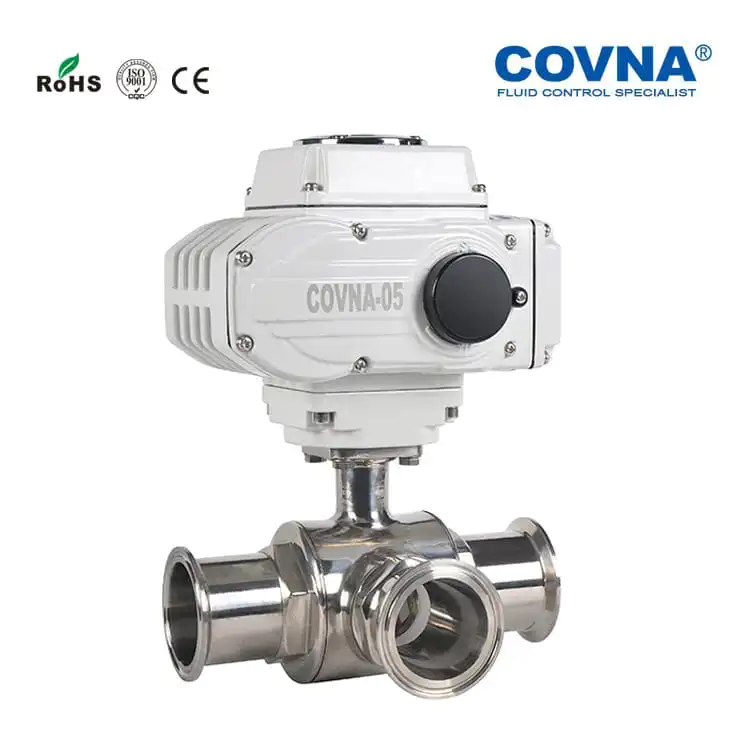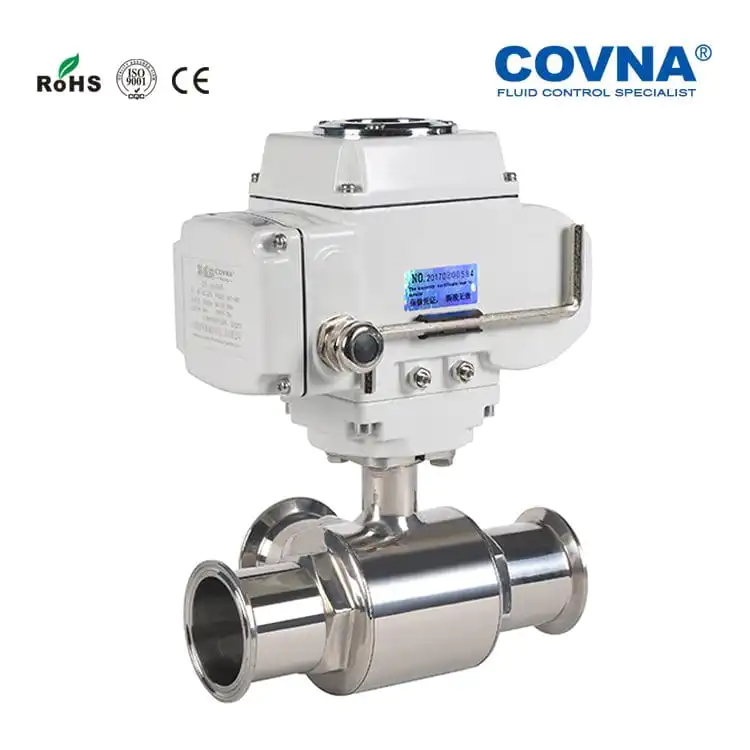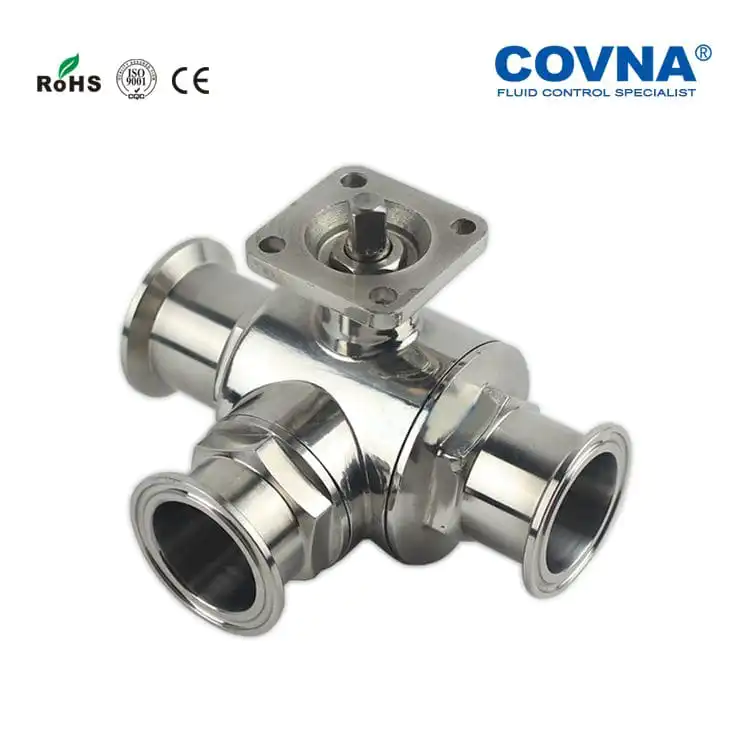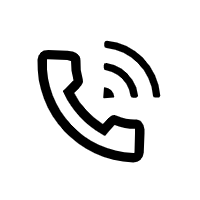COVNA Products






COVNA HK60-Q-WT Food Grade 3 Way Electric Actuator Ball Valve
COVNA HK60-Q-WT Food Grade 3 Way Electric Actuator Ball Valve
standard on/off control, 4-20mA or 0-10VDC modulating control is available, 304 or 316 stainless steel body construction, 220VAC standard voltage, minimum 1/2 inch tri-clamp connection, default PTFE seat, resistant to almost all fluids. Voltage:DC-12V, 24V; AC-24V, 110V, 220V, 380V.
Suitable for food, water, air, milk, pure water, etc.
It has been through the sophisticated inspection process and strict quality management.
| Model | HK60-Q-WT 3-Way Sanitary Ball Valve |
| Torque Range | 50Nm to 4000Nm |
| Size Range | 19mm to 102mm |
| Pressure | 16bar |
| Temperature | -10℃ to 180℃ (14℉ to 356℉) |
| Voltage | DC-12V, 24V; AC-24V, 110V, 220V, 380V |
| Medium | Milk, Soft Drink, Water and Other Medium |
HK60-Q-WT Food Grade 3 Way Electric Actuator Ball Valve
● Features: Compact Design, Eco-friendly, Easy Installation, etc
● Torque: 50N.m or 4000N.m
● Rotation: Quarter-turn
● Actuator Type: ON OFF Type, Regulating Type and Intelligent Type
● Material: Stainless Steel and Plastic
● Connection: Thread, Flange, Tri Clamp and Welding
● Valve Type: 2 Ways or 3 Ways(T Port or L Port)
● Voltage: 12V DC, 24V DC, 24V AC, 110V AC, 220V AC
● Tolerance: ±10%
● Suitable Medium: Water, Oil, Air, Gas, etc
Technical Parameters of Valve Actuator
| ON/OFF Type | Feedback: the active contact signal, passive contact signal, resistance, 4-20mA |
| Regulation Type | Input & Output signal: DC 4-20mA, DC 0-10V, DC 1-5V |
| Field operation | The Field, Remote Control Switch Regulation and MODBUS, PROFIBUS Field Bus |
| Voltage Optional | AC110-240V 380V 50/60HZ: DC12V, DC24V, Special Voltage Can be Customized |
| Protection Class | IP65, Explosion Proof Construction Are Available: EX ll BT4 |
Technical Parameters of Valve Body
| Size Range | DN15-100 | Medium | Air, water, steam, oil, liquid, etc |
| Core Materal | Stainless Steel | Structure | 3 Way T Type / L Type |
| Body Material | Stainless Steel | End Connection | Tri-clamp, Butt Welded |
| Voltage | DC-12V, 24V; AC-24V, 120V, 240V/60Hz; 110V, 220V/50Hz | Voltage Tolerance | ±10% |
| Working Pressure | 1.0 / 1.6MPa (10 / 16 bar) | Temperature Of Media | -30~180℃ (-22℉~356℉) |

Technical Parameter of Valve Body:
| Nominal Size | DN15-DN200 | Body Material | PVC, UPV, CPVC, PVDF and PPH |
| End Connection | True Union, Double Union Thread | Structure | T Port / L Port |
| Operating Pressure | 1.0 / 1.6 MPa (10 / 16 bar) | Voltage Tolerance | ±10% |
| Suitable Media | Corrosive media, Water, Air, etc | Temperature Of Media | -5~80℃ (23℉~176℉) |
| Design standard | ISO, DIN, IDF, SMS, 3A | Orifice(mm) | 15, 20, 25, 32, 40, 50, 65, 80, 100 |
Package & Shipping:
As a professional electric ball valve manufacturer, COVNA aims to provide our customers the best quality products with the most competitive pricing, on-time delivery and full warranty service with omprehensive service from start to finish, encompassing consultation through to after sales service, full support in every respect and ensure that you are accompanied at each stage of your project.
Company Profile:
Factory Profile:
Company Certificates:
Purchase Guide:
- Confirm the valve size you need. We offer this electrically actuated sanitary ball valve in 19mm to 102mm
- Confirm the valve body material you need. We offer this electrically actuated sanitary ball valve in stainless steel 304, ss316 and ss316L material
- Confirm the pressure and working temperature. Pressure and temperature are the important points and those may affect the cost
- Confirm the voltage you need. The right voltage could help your valve operate better
- Tell us your medium. Different medium has different features and we will help you to select the valve basic on the medium requirements
- Confirm the actuator type you need. We have on/off type, modulating type, intelligent type, explosion-proof type, IP68 type and auto return type electric valve actuator for your project and meet your actuation needs
- Any requirements please tell us like core material, sealing material, or connection standard. We could help you to custom the valve you need
More infomation, please send message to us. Quote will be provided within 2 hours![email protected]
Technical Parameter of Actuators:
| Model | 5 | 10 | 16 | 30 | 60 | 125 | 250 | 400 |
| Torque Output | 50Nm | 100Nm | 160Nm | 300Nm | 600Nm | 1250Nm | 2500Nm | 4000Nm |
| 90°Cycle Time | 20s/60s | 15s/30s/60s | 15s/30s | 15s/30s | 30s/60s | 100s | 100s | 100s |
| Angle of Rotation | 0-90° | 0-90° | 0-90° | 0-90° | 0-90° | 0-90° | 0-90° | 0-90° |
| Working Current | 0.25A | 0.48A | 0.68A | 0.8A | 1.2A | 2A | 2A | 2.7A |
| Starting Current | 0.25A | 0.48A | 0.72A | 0.86A | 1.38A | 2.3A | 2.3A | 3A |
| Drive Motor | 10W/F | 25W/F | 30W/F | 40W/F | 90W/F | 100W/F | 120W/F | 140W/F |
| Product Weight | 3kg | 5kg | 5.5kg | 8kg | 8.5kg | 15kg | 15.5kg | 16kg |
| Voltage Option | AC 110V, AC 220V, AC 380V, DC 12V, DC 24V | |||||||
| Insulation Resistance | DC24V:100MΩ/250V; AC110/220V/380V: 100MΩ/500V | |||||||
| Withstand Voltage | DC24V:500V; AC110/220V:1500V; AC380V:1800V 1Minute | |||||||
| Protection Class | IP65 | |||||||
| Installation Angle | Any | |||||||
| Electrical Connection | G1/2 Water-proof Gable Connectors, Electric Power Wire, Signal Wire | |||||||
| Ambient Temp. | -30℃to 60℃ | |||||||
|
Control Circuit
|
A: ON/OFF type with light indicator signal feedback | |||||||
| B: ON/OFF type with passive contact signal feedback | ||||||||
| C: ON/OFF type with resistance potentiometer signal feedback | ||||||||
| D: ON/OFF type with resistance potentiometer and neutral position signal feedback | ||||||||
| E: Regulation type with servo control module | ||||||||
| F: DC24V/DC12V dirct ON/OFF type | ||||||||
| G: AC380V three-phase power supply with passive signal feedback | ||||||||
| H: AC380V three-phase power supply with resistance potentiometer signal feedback | ||||||||
| Optional Function | Over Torque protectors, dehumidify heater, stainless steel coupling & yoke | |||||||
1.Oil and Gas Industry
Pipeline Flow and Pressure Control: Used for flow and pressure control in natural gas and oil pipelines to ensure stability during transportation.
Gas and Liquid Distribution Systems: Regulates the flow of gases or liquids, ensuring precise control under various operating conditions.
Automation of Distribution Systems: Used in refineries and natural gas processing plants to automate fluid distribution and regulate the reaction processes.
2.Chemical and Petrochemical Industry
Reactor Pressure and Flow Control: Used in chemical reactors, storage tanks, and other equipment to control pressure and flow, ensuring stability in the chemical reaction process.
Flow/Pressure Regulation: Regulates the flow of liquids or gases in processes such as polymerization, refining, and distillation to ensure efficient production.
Steam Control: Regulates the flow and pressure of steam in steam generators and distribution systems.
3.Water and Wastewater Treatment
Water Flow Control: Regulates water flow and pressure in water supply and wastewater treatment systems to ensure normal operation.
Gas and Chemical Additions: Regulates the flow of chemicals or gases (such as chlorine or ammonia) added during the water treatment process.
4.HVAC (Heating, Ventilation, and Air Conditioning) Systems
Temperature Control and Airflow Regulation: Used in air conditioning systems to regulate the flow of cooling or heating fluids to maintain the desired temperature.
Pressure and Airflow Regulation: Adjusts the flow and pressure of air in ventilation, air conditioning, and humidification systems to ensure indoor comfort.
5.Food and Beverage Industry
Liquid Flow Control: Precisely controls the flow of liquids in processes such as brewing, dairy production, and beverage bottling.
Temperature and Pressure Regulation: Regulates temperature and pressure during heating, cooling, and sterilization to ensure product quality and safety.
6.Pharmaceutical Industry
Precision Flow Control: Regulates the flow of liquids and gases in pharmaceutical manufacturing processes to ensure precise control of process parameters.
Pressure Control: Adjusts pressure in cleaning and sterilization systems to ensure stable system operation.
7.HVAC Systems
Airflow and Temperature Control: Controls the flow and temperature of air to adjust environmental conditions, ensuring comfort and energy efficiency inside buildings.
8.Steel and Metallurgical Industry
Gas Flow Control: Precisely adjusts the flow of gases such as oxygen and nitrogen during smelting and heating processes to ensure stable furnace temperatures and chemical reactions.
Cooling Fluid Flow Regulation: Regulates the flow of cooling fluids in cooling systems to ensure temperature control of equipment.
9.Thermal and Power Industry
Steam and Water Flow and Pressure Control: Regulates the flow of steam and water in boiler systems, heat exchangers, and power plants to ensure efficient operation of thermal systems.
10.Mining Industry
Slurry Flow Regulation: Adjusts the flow and pressure of slurry during transportation and separation processes to ensure efficient extraction and processing of minerals.
The actuator on my automated valve operates, but the valve won’t turn. Why?
Most likely the valve stem or actuator coupling is broken.
Why doesn’t my valve open or close completely when the actuator operates it?
The electric actuator limit switches or the pneumatic actuator position stops are not correctly adjusted.
When I energize the solenoid on my pneumatic actuated valve, the valve won’t turn. How come?
Probably because there is no air pressure to the solenoid or dirt has jammed it. Also, debris might be trapped inside the valve. Or, the air pressure is not sufficient to operate the actuator. Remember: measure air pressure at the actuator, not at the compressor.
Can I buy an actuator from one manufacturer and mount it to a valve from another manufacturer?
Maybe. First, be sure that the actuator torque output is sufficient to turn the valve reliably. Second, you will have to fabricate a custom mounting bracket and coupling to connect the actuator to the valve.
What happens if I lose power to my electric actuator in the middle of an actuation cycle?
The valve will stop somewhere between full open and close. When power is reapplied to the original circuit, the actuator will complete the cycle.
I ordered a fail open pneumatic actuated valve by mistake. I needed a fail closed one. What can I do?
To make the change just remove the actuator from the valve and turn it, or the valve stem, 90 degrees and remount the actuator.
I’ve installed my automated valve in the line, but now I don’t know if the valve is in the open or closed position. How can I find out?
Remove the actuator from the valve and check the valve stem. Most ball valves have stem flats at right angles to the flow when the valve is in the off position. On butterfly valves check the stem flow arrow marking.
Do I have to have the solenoid valve that controls the air supply to my pneumatic actuator mounted right on the actuator?
Remove the actuator from the valve and check the valve stem. Most ball valves have stem flats at right angles to the flow when the valve is in the off position. On butterfly valves check the stem flow arrow marking.
How do I wire up my electric actuator?
Check the electric wiring schematic that came with the actuator for the correct hookup. Sometimes a copy is inside the actuator cover. If it is missing, don’t guess about the connections. Call the manufacturer for a schematic.
I’ve just installed an electric actuated valve and when I power it, it turns the valve 360 degrees and won’t shut off. What’s wrong?
The actuator is wired incorrectly (check the schematic accompanying the actuator), or the external control switch is not the correct type for the actuator.
My electric actuators cycle time is way too fast, can I slow it down?
Not unless you bought it with an optional speed control.
I just replaced a solenoid valve with an electric actuated valve and it won’t work. Why?
Actuators and solenoid valves require different types of electrical control switches. SPDT for actuators, SPST for solenoids. Check the actuator wiring schematic for the correct wiring and switch type.







_2022_03(1).png)















